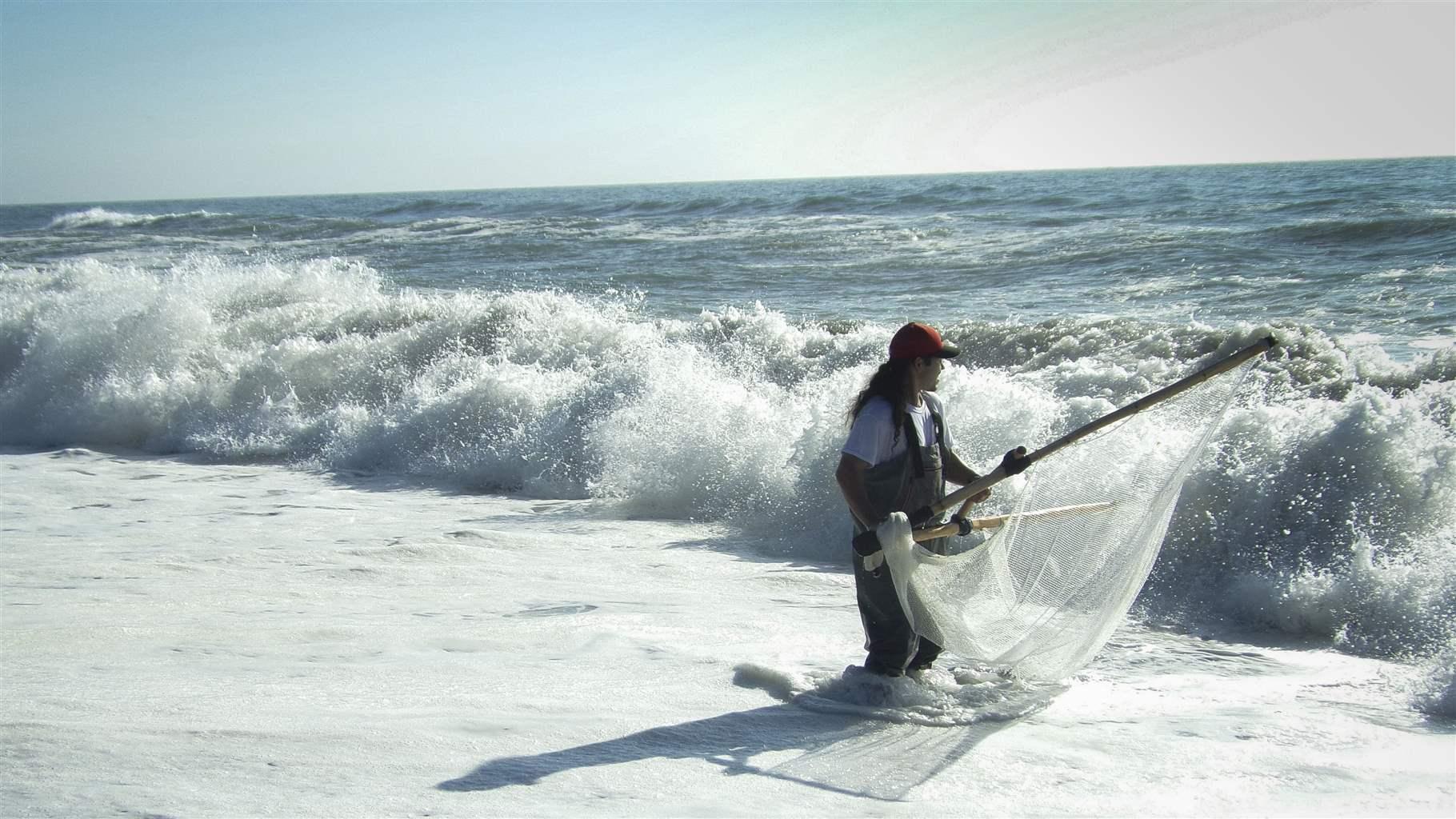In California, Tribes Make Strides on Coastal and Marine Stewardship
Inter-Tribal alliance and collaboration with state give Native American communities more say over ocean and coastal areas

"My ancestors were scientists before the word ‘scientist’ came into their lives.”
Those are the words of Jaytuk Steinruck in a recent video highlighting the work of the Tribal Marine Stewards Network (TMSN), a growing alliance of California Tribal Nations applying Indigenous knowledge and Tribal science, to manage fisheries and coastal habitats in the face of rising ocean temperatures and sea levels, coastal erosion, extreme storms, and drought.
“The network is not only going to provide people with jobs, but it's also going to bring Indigenous, Native people to the forefront and support the Tribes of this state and this country to continue to look after the resources that are so important to all of us,” said Steinruck, who is a member of TMSN’s Leadership Council and the Tolowa Dee-ni' Nation Tribal Council.
TMSN, formed in 2022, focuses on four themes: environmental stewardship, economic and community prosperity, cultural vitality, and Tribal capacity building. TMSN members lead more than three dozen initiatives, including:
- Restoration and monitoring activities for important species such as salmon, surf smelt, and abalone and for habitats including coastal wetlands, beaches and dunes, rocky intertidal areas, and kelp forests.
- Frequent monitoring for toxic algae blooms in the ocean and biotoxins such as domoic acid and paralytic shellfish poison, which pose serious public health threats.
- Surveying of culturally important sites along the coast.
- Organization of community outreach and educational events for youth and adults.
“The work that the Tribal Marine Stewards Network is doing right now is incredibly valuable,” said Abreanna Gomes, a member of the TMSN Leadership Council and an environmental specialist with the Kashia Band of Pomo Indians of the Stewarts Point Rancheria. “Having a coalition of Tribal Nations working together makes each Tribe involved that much stronger.”
The Pew Charitable Trusts has provided funding and technical assistance to TMSN since 2022 and supports the Yurok-Tolowa-Dee-ni' Indigenous Marine Stewardship Area, a first-of-its-kind designation enacted by three TMSN member Tribes: the Pulikla Tribe of Yurok People, Tolowa Dee-ni' Nation, and the Cher-Ae Heights Indian Community of the Trinidad Rancheria. In addition, Pew advocated for passage of legislation (Assembly Bill 1284) encouraging the California Natural Resources Agency to enter into co-governance and co-management agreements with Tribes on their ancestral lands and waters. Governor Gavin Newsom signed the bill into law in September, and it took effect in January.
Cher-Ae Heights Indian Community of the Trinidad Rancheria joins TMSN
At its annual meeting in March, the TMSN announced that the Cher-Ae Heights Indian Community of the Trinidad Rancheria was the sixth Tribe to join the network.
“As Ner-er-Nerh, people of the ocean and a Tribe whose ties to the land and the coast are very deep, we are honored to join the Tribal Marine Stewards Network,” said Aprilskye Hemsted, a Cher-Ae Heights Indian Community of the Trinidad Rancheria Tribal Council member. “We are very excited for the opportunity and to be able to dive deeper into understanding what is taking place in the ocean around us, knowing that Tribal collaboration is the best way to steward the water.”
Michael Esgro, senior biodiversity program manager and Tribal liaison for California’s Ocean Protection Council (OPC), which advises the governor on coastal and ocean policy, attended the meeting and said, “[W]e look forward to continuing our support for tribal science and stewardship by helping to establish the Tribal Marine Stewards Network as an enduring program into the future.”
Momentum mounts for Tribal marine stewardship and co-management
In December, the Trinidad Rancheria joined two other TMSN member Tribes—Tolowa Dee-ni' Nation and the Pulikla Tribe of Yurok People—in signing an inter-Tribal treaty to deepen their shared commitment to the Yurok-Tolowa Dee-ni’ Indigenous Marine Stewardship Area.
And in June, California’s OPC is slated to finalize its 30x30 Decision Making Framework for Coastal Waters as part of California’s goal to durably conserve 30% of its lands and coastal waters by 2030. OPC’s draft framework supports tribally led conservation, “including through the creation of Indigenous Marine Stewardship Areas."
Once the framework is final, state officials will use it to determine which existing areas will be included. This exercise by the state could illuminate additional policies, designations, or new management measures needed to achieve the “30 by 30” goal.
In June, OPC is expected to request proposals to help the state protect coastal and marine areas and reportedly has $10 million to fund successful proposals. One area of focus is “Restoring and Revitalizing Tribal Stewardship”—good news for TMSN and other Tribally led initiatives that may want to apply.
Looking ahead
TMSN is considering options for how to expand the network and its authority, akin to the Coastal Guardian Watchmen along the Pacific Coast and Indigenous Rangers Program in Australia. The network is also exploring structural changes, including through models such as project finance for permanence, to ensure sustained funding with Tribes in the lead.
Bobby Hayden works on The Pew Charitable Trusts’ U.S. conservation project.













